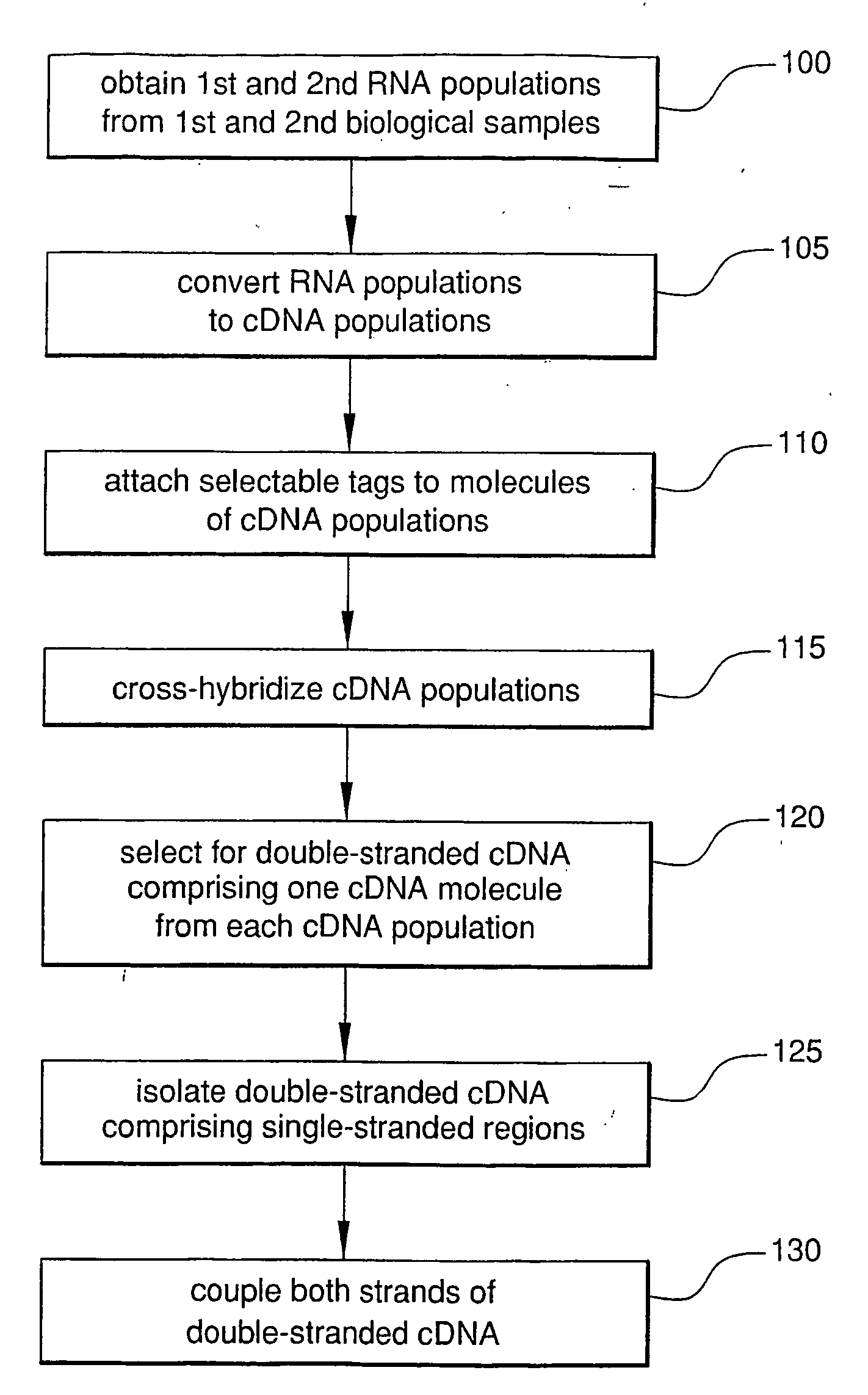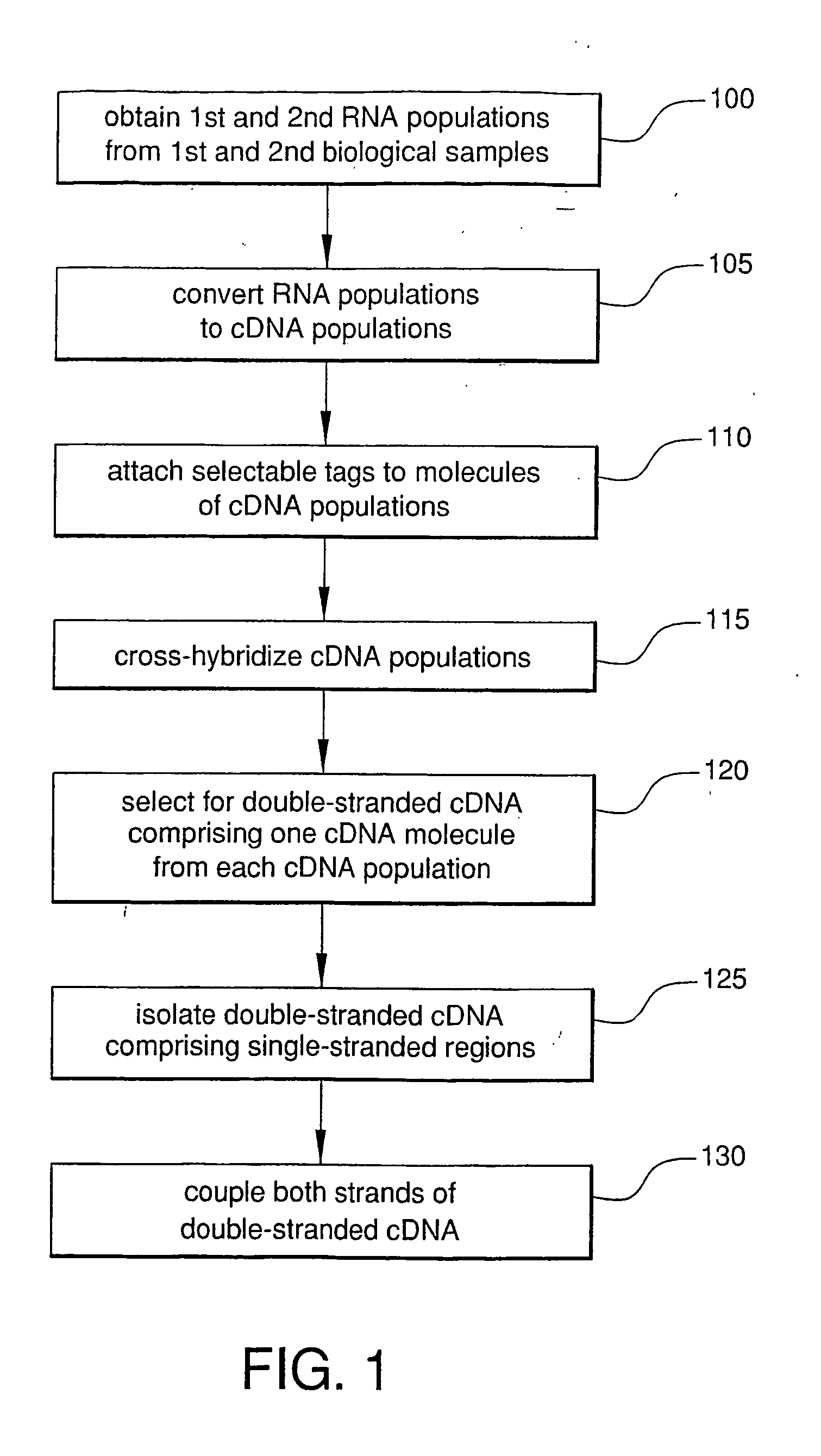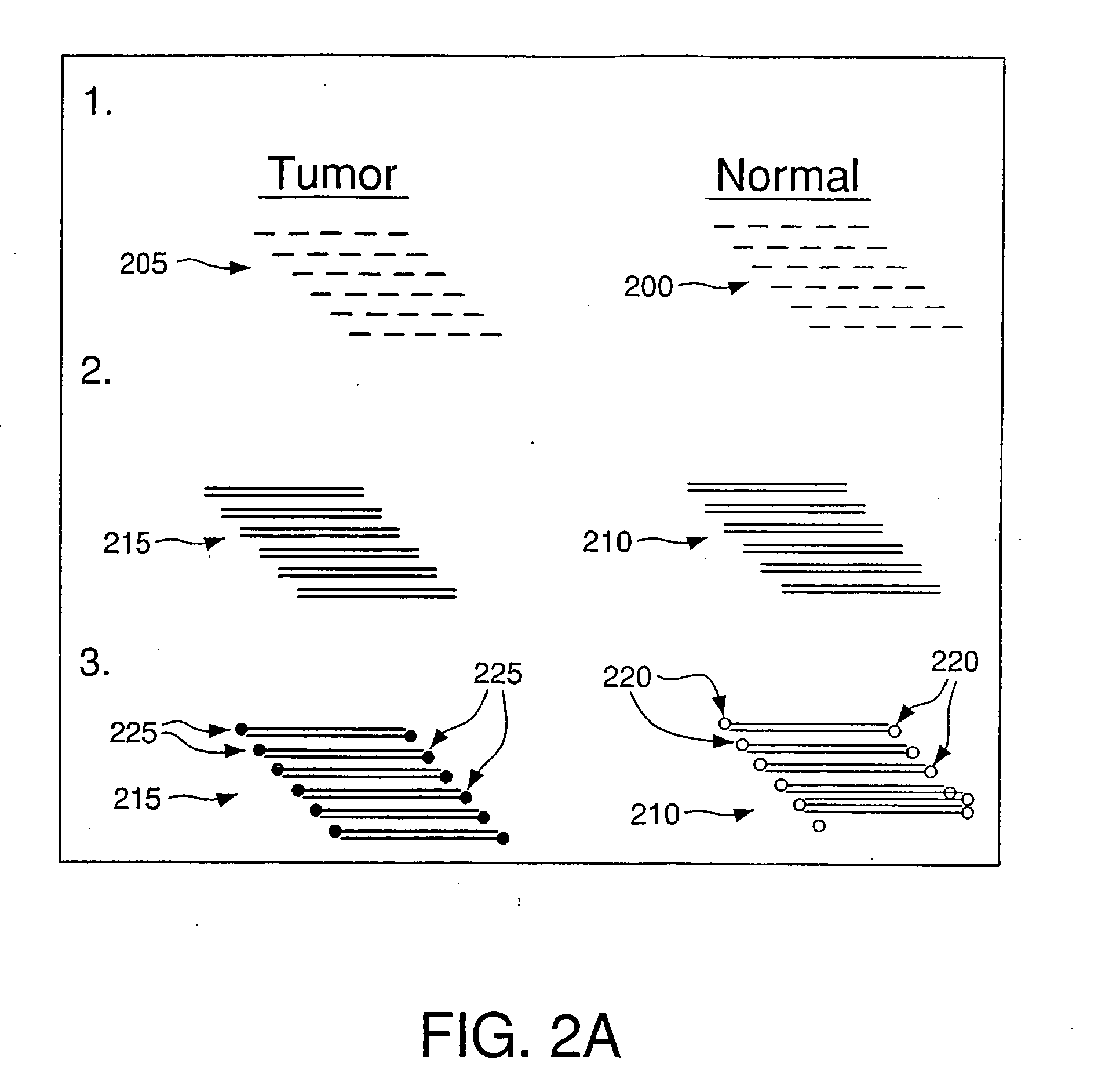Method For Rapid Identification of Alternative Splicing
a technology of alternative splicing and mrna, which is applied in the field of isolating and identifying alternative spliced mrna, can solve the problems of incidental or tedious nature, low efficiency of mrna cloning, and limited current methodologies to either cdna cloning (high labor intensity),
- Summary
- Abstract
- Description
- Claims
- Application Information
AI Technical Summary
Benefits of technology
Problems solved by technology
Method used
Image
Examples
example 1
Retention of Mismatched Double-Stranded DNA by SOPE™ Resin
[0103]Oligonucleotide molecules were synthesized that were otherwise complementary except for a 4, 8, or 20 base insertion relative to one strand. After annealing, the double stranded DNA containing the mismatched regions were incubated with SOPE™ resin (Edge Biosystems, Gaithersburg, Md.) in H2O at room temperature, according to the manufacturer's instructions. Lanes 1, 3, and 5 of FIG. 3 show annealed DNA containing 20, 8 and 4 base mismatch regions, respectively, prior to binding to SOPE™ resin. SOPE™ resin was then added to the DNA. The DNA remaining in the supernatant after pelleting of the SOPE™ resin with bound DNA by centrifugation is shown in FIG. 3 (lane 2; 20 base mismatch, lane 4; 8 base mismatch, lane 6; 6 base mismatch). As can be seen from the figure, all of the double stranded DNA with a 20 base mismatch and approximately 90% of the double-stranded DNA with an 8 base mismatch was bound to the SOPE™ resin. The ...
PUM
| Property | Measurement | Unit |
|---|---|---|
| temperatures | aaaaa | aaaaa |
| temperatures | aaaaa | aaaaa |
| volumes | aaaaa | aaaaa |
Abstract
Description
Claims
Application Information
 Login to View More
Login to View More - R&D
- Intellectual Property
- Life Sciences
- Materials
- Tech Scout
- Unparalleled Data Quality
- Higher Quality Content
- 60% Fewer Hallucinations
Browse by: Latest US Patents, China's latest patents, Technical Efficacy Thesaurus, Application Domain, Technology Topic, Popular Technical Reports.
© 2025 PatSnap. All rights reserved.Legal|Privacy policy|Modern Slavery Act Transparency Statement|Sitemap|About US| Contact US: help@patsnap.com



